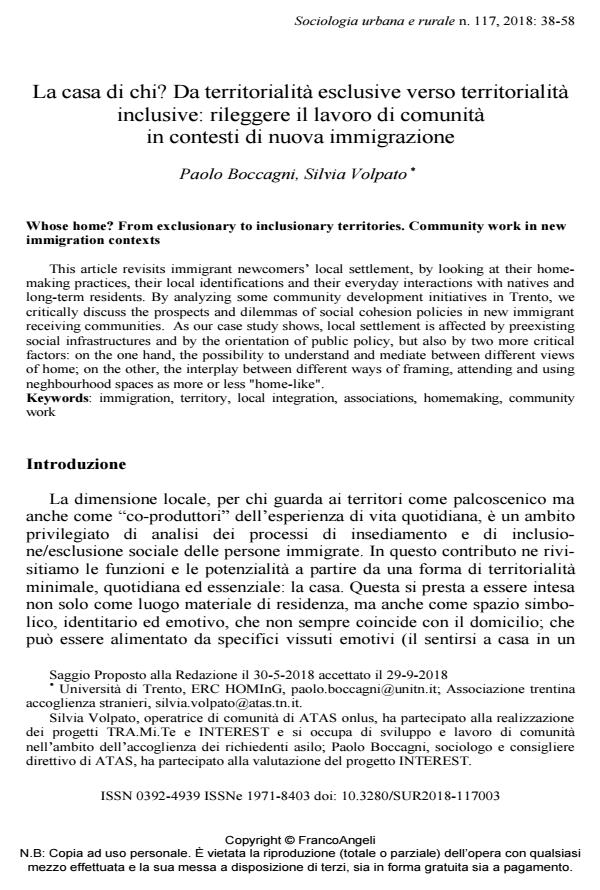Whose home? From exclusionary to inclusionary territories. Community work in new immigration contexts
Journal title SOCIOLOGIA URBANA E RURALE
Author/s Paolo Boccagni, Silvia Volpato
Publishing Year 2019 Issue 2018/117
Language Italian Pages 21 P. 38-58 File size 296 KB
DOI 10.3280/SUR2018-117003
DOI is like a bar code for intellectual property: to have more infomation
click here
Below, you can see the article first page
If you want to buy this article in PDF format, you can do it, following the instructions to buy download credits

FrancoAngeli is member of Publishers International Linking Association, Inc (PILA), a not-for-profit association which run the CrossRef service enabling links to and from online scholarly content.
This article revisits immigrant newcomers’ local settlement, by looking at their home-making practices, their local identifications and their everyday interactions with natives and long-term residents. By analyzing some community development initiatives in Trento, we critically discuss the prospects and dilemmas of social cohesion policies in new immigrant receiving communities. As our case study shows, local settlement is affected by preexisting social infrastructures and by the orientation of public policy, but also by two more critical factors: on the one hand, the possibility to understand and mediate between different views of home; on the other, the interplay between different ways of framing, attending and using neghbourhood spaces as more or less "home-like".
Keywords: Immigration, territory, local integration, associations, homemaking, community work
Paolo Boccagni, Silvia Volpato, La casa di chi? Da territorialità esclusive verso territorialità inclusive: rileggere il lavoro di comunità in contesti di nuova immigrazione in "SOCIOLOGIA URBANA E RURALE" 117/2018, pp 38-58, DOI: 10.3280/SUR2018-117003